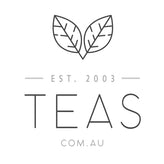The Korean Tea-Break
Posted by BEV A

 Koreans are not particularly fond of tea. I understand that this statement will incur protests – and with some justification. Indeed, tea has been known in Korea for at least two millennia; it did play an important role in Korean culture and Korea does have a number of tea enthusiasts and connoisseurs.
Koreans are not particularly fond of tea. I understand that this statement will incur protests – and with some justification. Indeed, tea has been known in Korea for at least two millennia; it did play an important role in Korean culture and Korea does have a number of tea enthusiasts and connoisseurs.
Nonetheless, the hard data confirms my statement. Compared with its neighbors, Koreans are quite indifferent to tea. The Chinese discovered the drink and still are the world’s second greatest consumers of the beverage. Third is Russia, while Japan – another Korean neighbor – is number five on this list.
In contrast, in 1999 the average Korean consumed a mere 31grams of tea a year – 35 times less than the average Japanese, 40 times less than the average Russian and 100 times less than the average Irishman!
Of course, apart from tea in a strict sense, i.e. that which is made from tea leaves, Koreans drink a variety of herbal “teas.’’ Indeed, in few other countries do these herbal drinks enjoy the same popularity as in Korea. However, these herbal infusions may be good in their own right, but they are not really tea.
Tea drinking in Korea has a hallowed tradition, so what are the reasons for such neglect? The tradition itself is certainly still respected. Koreans are proud of the sophisticated culture of their tea ceremony. This ceremony once developed in the Buddhist monasteries, and many great practitioners of this complicated craft were Buddhist monks.
Once upon a time this close association between tea and Buddhism harbored dangers for the future of Korean tea culture. In the late 14th century the intellectual climate in the country underwent a serious change. Buddhism, though not officially banned, was pushed aside by the new rulers. The new Choson Kingdom and its officials despised all things Buddhist. Buddhism came to be seen as a superstition, unbecoming of learned men. Tea drinking was a part of the Buddhist tradition and thus the Neo-Confucian zealots despised it. Tea and its associated rituals did not disappear completely, but they were marginalized.
The colonial era brought some revival to tea culture. The Japanese were great consumers of tea, and they established tea plantations in the southern part of their new colony. The Japanese style tea ceremony was taught in Korean girls’ schools. Nonetheless, the consumption of tea among Koreans remained at a very low level.
Nowadays, Korean tea enthusiasts tend to present the history of tea in Korea as an unbroken line of tradition. To some extent, it’s true, but at some points this “line’’ has been dangerously thin.
The situation began to change only in the 1980s. To a large extent this was due to the efforts of numerous tea enthusiasts who saved and revived (and, I suspect, partially reinvented) Korean tea culture. The activity of numerous associations and tea clubs led to the revival of the tea traditions in Korea, even if the quantity of tea consumption remains unimpressive.
There were other factors that made this revival possible: medical research that confirmed the health benefits of tea drinking as well as the growth in the average disposable income. The financial consideration was important, since tea in Korea has been expensive. This was the result of a government policy: in order to protect local producers, the Korean government enforced high custom duties on imported teas. At the same time, locally grown teas tend to be expensive. Only in recent years has the situation begun to change – largely due to the looming opening of the Korean tea market. It will inflict a serious blow on the local producers, but it will also, in all probability, help to drive retail prices down.
Koreans decisively prefer green tea. Black tea, which is mainly consumed in Western Europe and Russia, is a rare commodity in Korea. In the early 1990s, I had trouble finding black tea in Korean shops. Only some of the large department stores stocked the generic brand Lipton, and this was as sophisticated as one could get. Nowadays, the situation has improved, but the Korean penchant for green tea has not changed much.
Most of the tea consumed in Korea reaches the customer in tea bags (71 percent of the market). Leaf teas form another 23 percent, while the remaining 6 percent comprises various kinds of food and beverages that include tea as one of the components. Indeed, the new craze for a healthy lifestyle means that any new beverage that includes tea can be advertised as natural and healthy. Things natural are in vogue nowadays. But that is another story…
(By Andrei Lankov, Hankooki.com, the Korea Times, April 2005)
SHARE:

AUSTRALIA'S FINEST LOOSE LEAF TEAS
Explore Australia's largest selection of Premium Teas & All-Natural Organic Herbal Blends.


